Blog
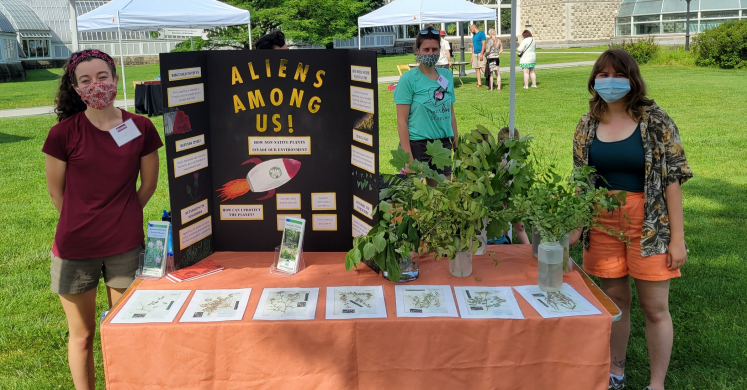
#bioPGH Blog: BioBlitz 2021 Results!
 A resource of Biophilia: Pittsburgh, #bioPGH is a weekly blog and social media series that aims to encourage both children and adults to reconnect with nature and enjoy what each of our distinctive seasons has to offer.
A resource of Biophilia: Pittsburgh, #bioPGH is a weekly blog and social media series that aims to encourage both children and adults to reconnect with nature and enjoy what each of our distinctive seasons has to offer.
The sky was a perfect clear blue, the plants seemed extra green, and nature enthusiasts of all ages were out in full force at this year’s BioBlitz on the front lawn of Phipps this past weekend!
What is a bioblitz?, one might ask. In the most traditional scientific sense, a bioblitz is an event that unites scientists and community members to identify as many living things in a given area over a set time frame. It truly is a mad dash, or a “blitz,” to quickly identify everything possible. Scientists can then use the data to better understand the health of the local ecosystem and keep a record of the living things in the study area.
Our BioBlitz and Family Fun Festival combines the science of a bioblitz with the joy of celebrating wild wonders. All day Sunday, the front of lawn of Phipps was bustling with an assortment of local scientists and naturalists, all sharing their work and chatting about the biodiversity of wild Pennsylvania. If you weren’t able to join us for the big day, check out what the excitement was all about!
Outreach
A variety of local researchers and naturalists were present from universities and non-profits across the city. Each of them brought activities and demonstrations to help demonstrate their work, many led themed nature walks into Schenley Park throughout the day to explore birds, snails, spiders, fish, plants, fungi, and everything in between! And to really hone in on those powers of observation, there two botanical illustration classes offered as well! Here is just a peek of the lawn:
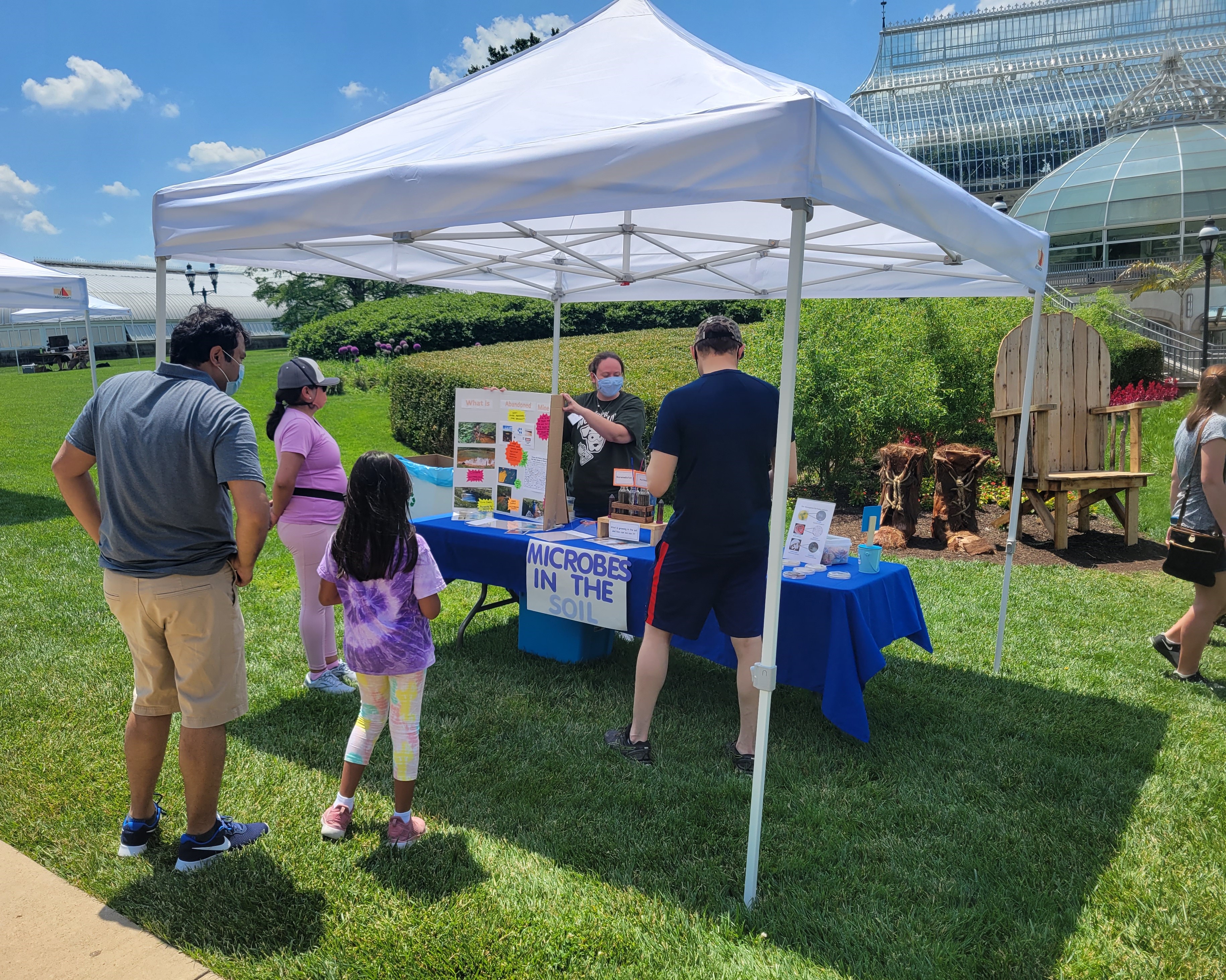
Dr. Michelle Valkanas shares about soil microbes.
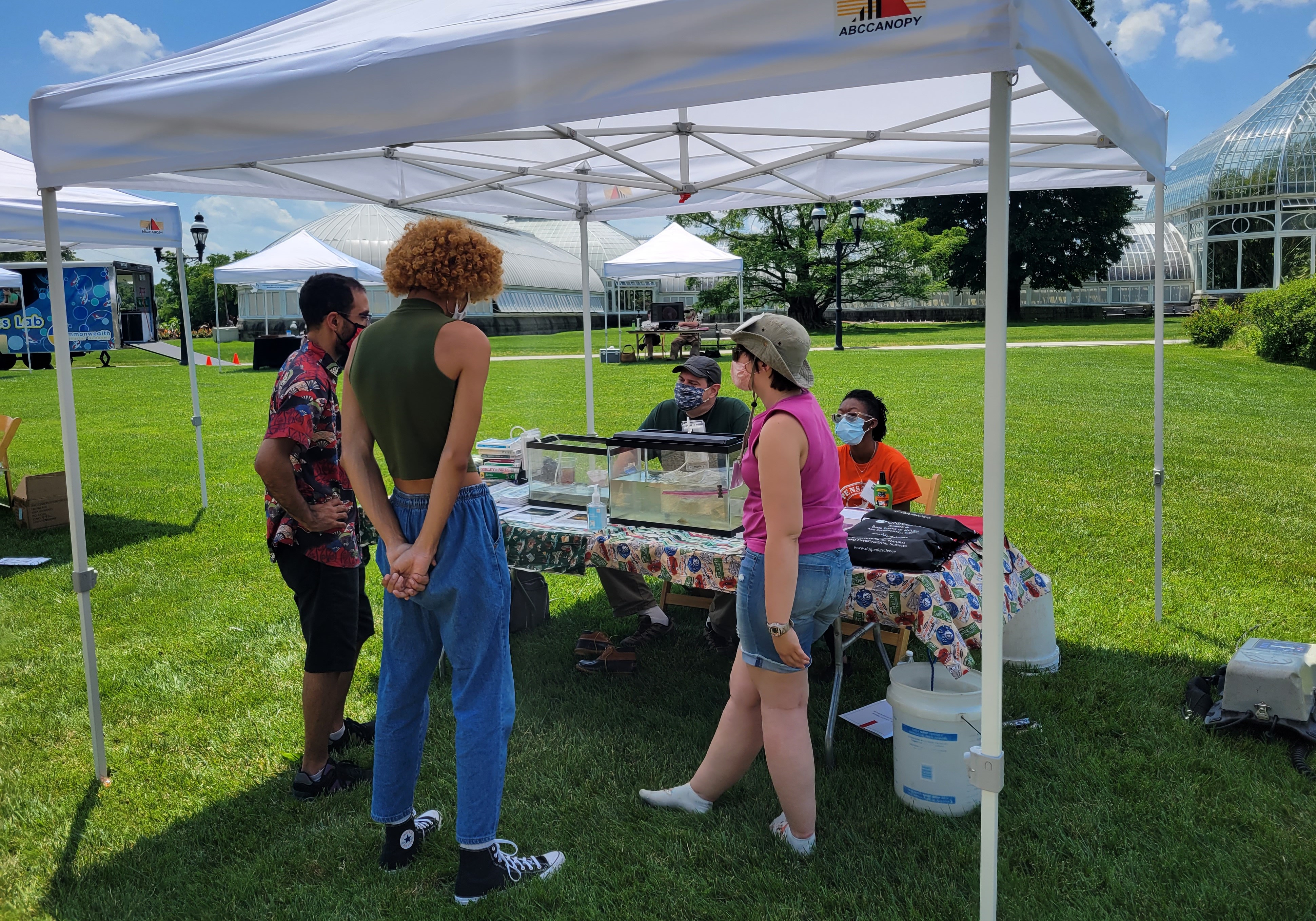
Dr. Brady Porter and his students talk about native Pennsylvania fishes.
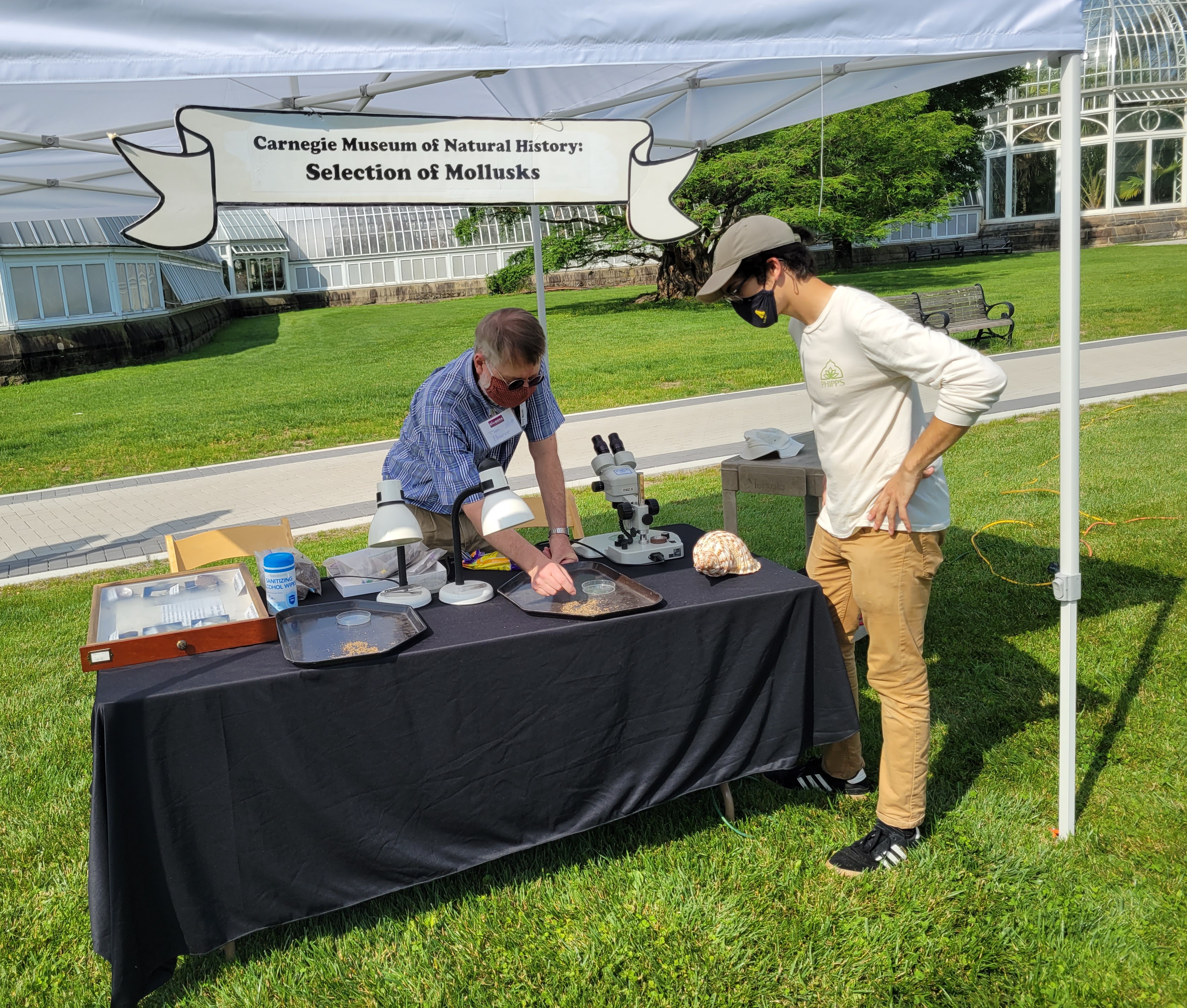
Dr. Tim Pearce of the Carnegie Museum of Natural History demos the teeniest of snails that can be found in leaf litter.
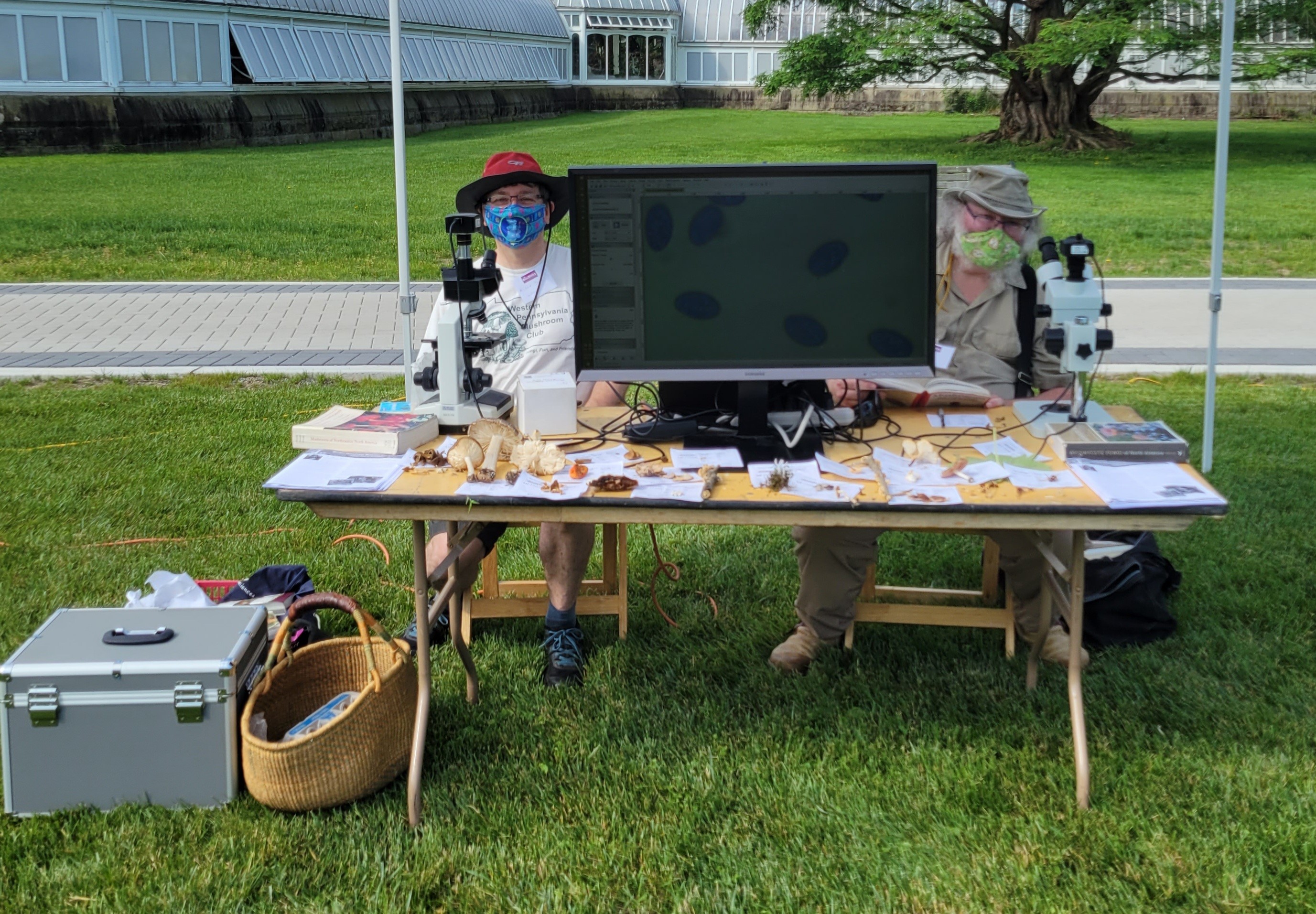
The Western Pennsylvania Mushroom Club brought an exciting table to learn about fungi.
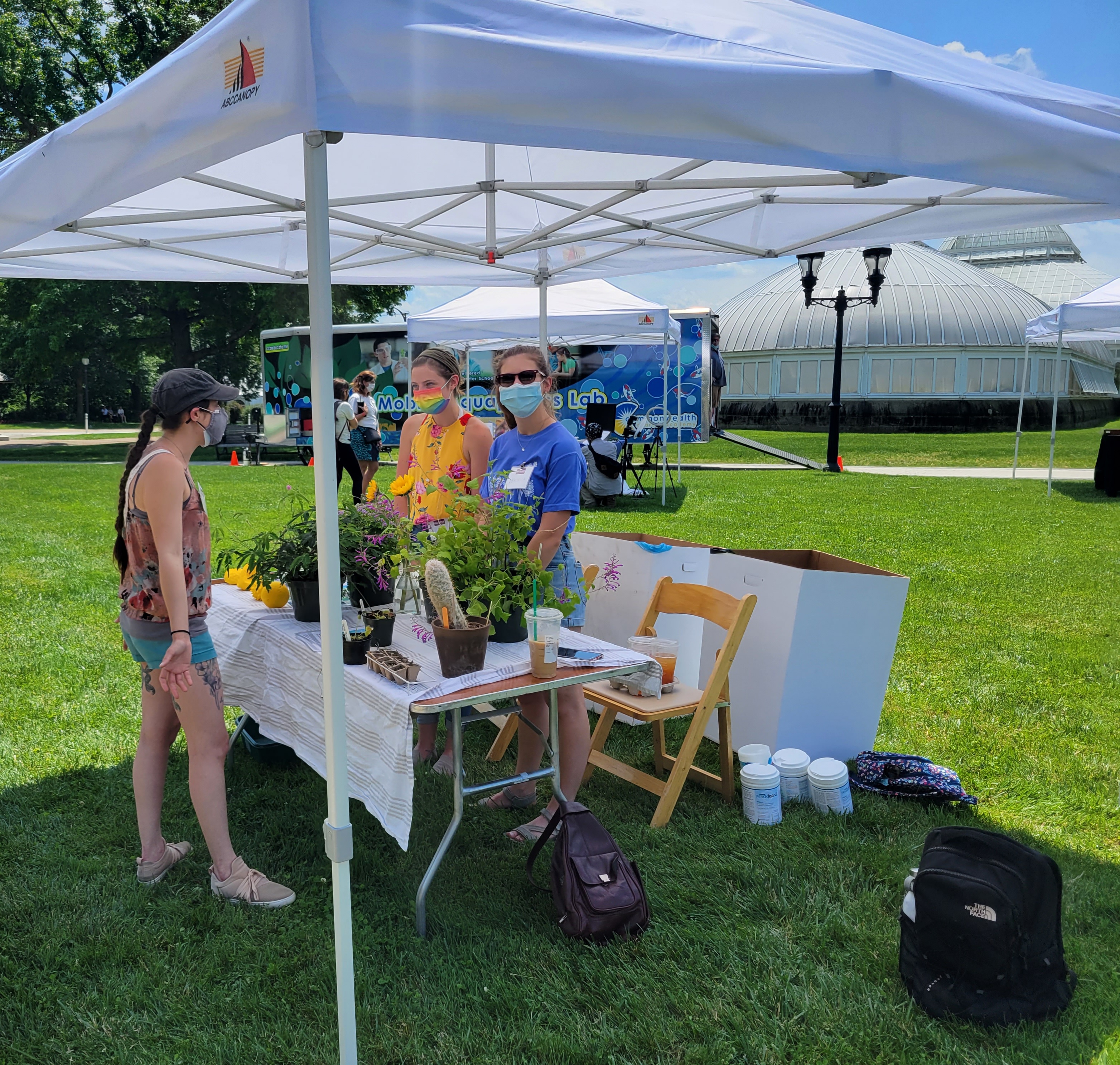
Dr. Tia-Lynn Ashman's lab brought a pollen match-up game and an assortment plants with different adaptations.
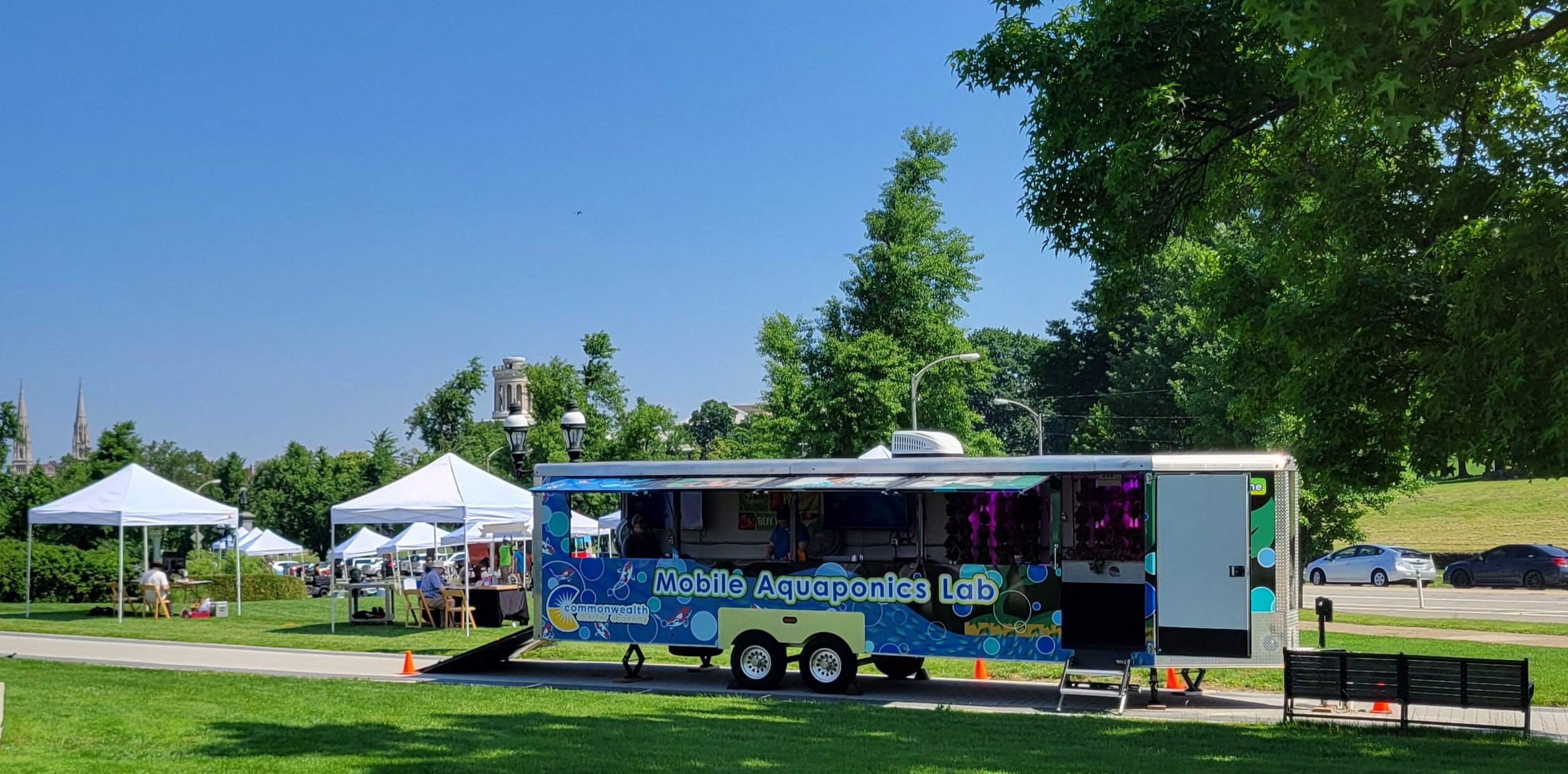
Commonwealth Charter Academy brought their Mobile Aquaponics Lab.
Data Collection
The key of a bioblitz is the data collection! With the notable exception of last year, BioBlitz has recorded the biodiversity of Schenley Park since 2016, and this year, 142 species were recorded in total.
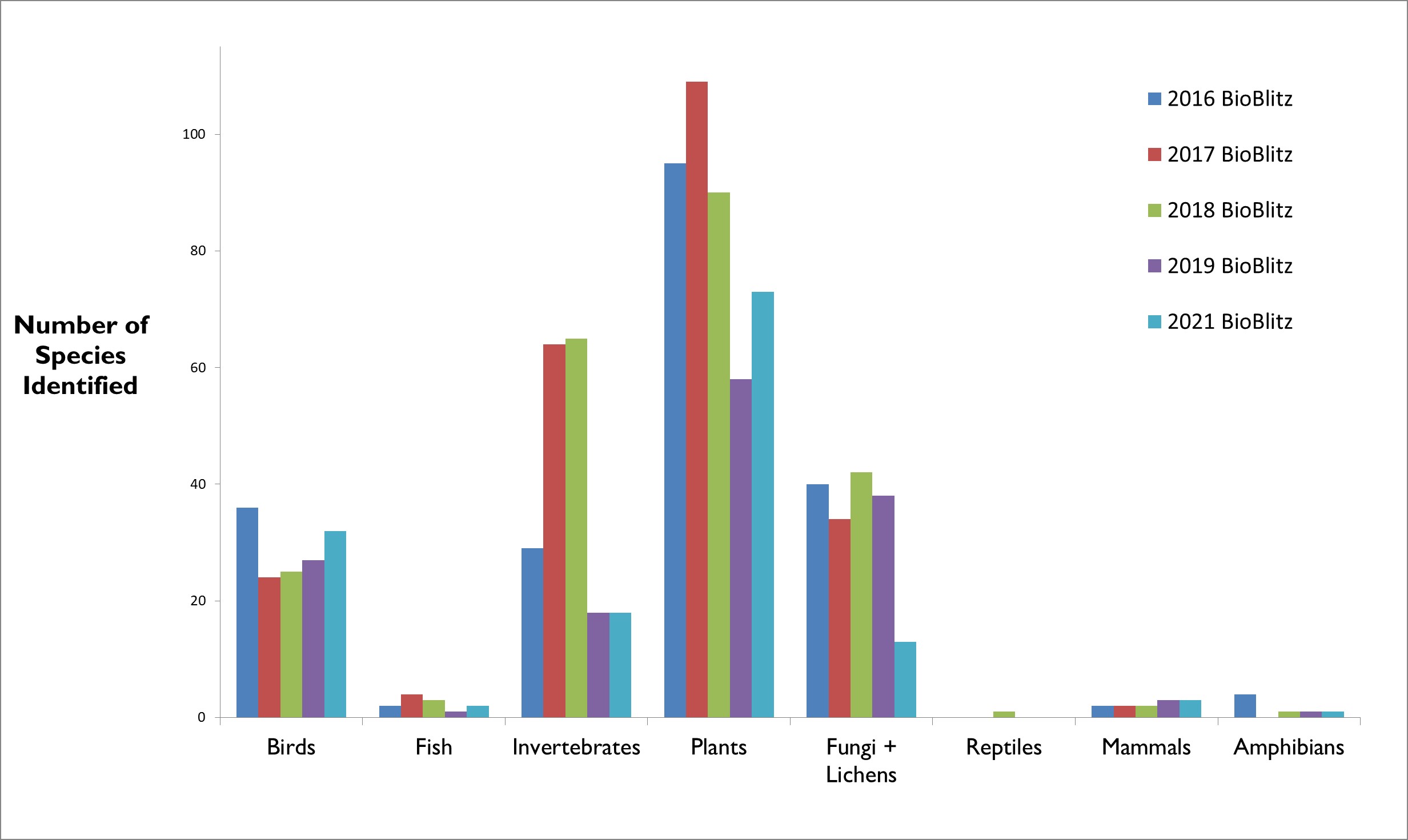
Note, there is some variation between years due to the differing specializations of scientists present at different events.
In a full traditional bioblitz, scientists can use the data to quickly get a snapshot of the biodiversity of a given area, and they answer variety of questions about that area - especially with data collected over several events. As you’re reading this at home, how might these species counts change if we held this event at different times of the year? What groups might stay the same? Which ones would be different? Which groups might more or fewer species at a different time of year?
BioBlitz is held on an early Sunday in June every year – if you missed us this year, keep an eye out for 2022!
This day would not have been possible without a community or scientists and naturalists dedicated to outreach. Thank you to Drs. Brady Porter and Kyle Selcer and their students from Duquesne University, Drs. Tia-Lynn Ashman and Sara Kuebbing and their students from the University of Pittsburgh, the Western Pennsylvania Mushroom Club, the Mobile Aquaponics Lab of Commonwealth Cyber Academy, Dr. Tim Pearce of the Carnegie Museum of Natural History, Dr. Michelle Valkanas of California University of Pennsylvania, spider expert Dr. Sebastian Echeverri, Stephen Bucklin of Pittsburgh Parks Conservancy, naturalists and Phipps volunteers Bernie and Verna McGinley, the Citizen Science Lab, the Allegheny Land Trust, Phipps botanical illustration instructor Robin Menard, and the City of Pittsburgh.
Species List
Birds
Acadian Flycatcher
American Goldfinch
American Robin
Baltimore Oriole
Black-throated Blue Warbler
Blue Jay
Brown-headed Cowbird
Carolina Chickadee
Cedar Waxwing
Chimney Swift
Chipping Sparrow
Downy Woodpecker
European Starling
Gray Catbird
House Finch
House Sparrow
House Wren
Mourning Dove
Northern Cardinal
Northern Flicker
Northern Rough-winged Swallow
Orchard Oriole
Peregrine Falcon
Red-bellied Woodpecker
Red-eyed Vireo
Red-tailed Hawk
Red-winged Blackbird
Scarlet Tanager
Song Sparrow
White-breasted Nuthatch
Wood Thrush
Yellow Warbler
Fish
Pumpkinseed
Bluegill
Pumpkinseed X Bluegill hybrid
Mammals
Eastern Cottontail
Eastern Chipmunk
Groundhog
Amphibians
American bullfrog
Invertebrates
Hippodamia parenthesis, Parenthesis Lady Beetle
Eristalina
Formicidae, Ant
Isopoda, Isopod
Lumbricina, earthworm
Diplopoda, Millipede
Chilopoda, Centipede
Leucauge venusta, Orchard Orbweaver
Vallonia excentrica, Land snail
Plants, Scientific and common/regional name
Eryngium, Eryngos
Cornus, dogwoods
Staphylea trifolia, American bladdernut
Fagus sylvatica, European beech
Aralia elata, Japanese angelica tree
Platanus, planes
Carpinus caroliniana, American hornbeam
Quercus bicolor, swamp white oak
Amaranthus, amaranths
Setaria, foxtails and bristlegrasses
Fagus sylvatica, European beech
Leonurus cardiaca, common motherwort
Pontederia cordata, pickerelweed
Nymphaea, water-lilies
Cercidiphyllum japonicum, katsura tree
Phytolacca americana, American pokeweed
Aesculus hippocastanum, horse-chestnut
Trifolium repens, white clover
Morus alba, white mulberry
Vitis, grapevines
Celtis occidentalis, common hackberry
Allium vineale, wild garlic
Lindera benzoin, northern spicebush
Parthenocissus quinquefolia, Virginia creeper
Platanus x hispanica, London Plane
Paulownia tomentosa, princess tree
Quercus rubra, northern red oak
Persicaria, knotweeds, smartweeds, and waterpeppers
Alliaria petiolata, garlic mustard
Acer saccharum, sugar maple
Trifolieae
Geum, avens
Ginkgo biloba, ginkgo
Toxicodendron radicans, poison ivy
Arctium lappa, greater burdock
Cornus drummondii, roughleaf dogwood
Lonicera japonica, Japanese honeysuckle
Asclepias syriaca, common milkweed
Woodsia obtusa, blunt woodsia
Pilosella caespitosa, meadow hawkweed
Potentilla recta, sulphur cinquefoil
Ambrosia artemisiifolia, common ragweed
Sisymbrium
Sedum acre, Biting Stonecrop
Asplenium platyneuron, ebony spleenwort
Philadelphus coronarius, Sweet Mock Orange
Acer platanoides, Norway maple
Woodsia obtusa, blunt woodsia
Ageratina altissima, white snakeroot
Aegopodium podagraria, Goutweed
Polystichum acrostichoides, Christmas fern
Carex, true sedges
Staphylea trifolia, American bladdernut
Erigeron philadelphicus, Philadelphia fleabane
Oxalis stricta, upright yellow woodsorrel
Rhamnus cathartica, common buckthorn
Chelidonium majus, Greater celandine
Toxicodendron radicans, poison ivy
Leonurus cardiaca, common motherwort
Artemisia vulgaris, common mugwort
Magnolia acuminata, Cucumber-tree
Zizia aurea, Golden Alexander
Plantago major, greater plantain
Ulmus americana, American elm
Sanicula odorata, clustered black snakeroot
Cercis canadensis, eastern redbud
Vinca minor, lesser periwinkle
Podophyllum peltatum, mayapple
Artemisia vulgaris, common mugwort
Lonicera, Honeysuckles
Sanicula odorata, Clustered black snakeroot
Ailanthus altissima, Tree-of-heaven
Fungi and Lichens, Scientific and regional/common name
Agrocybe praecox (Spring Agrocybe)
Allodus podophylli (Mayapple Rust)
Ceratiomyxa fruticulosa (Coral Slime)
Crepidotus applanatus (Flat Crep)
Daldinia childiae (Carbon Balls)
Hemitrichia clavata
Hydnoporia olivacea (Brown-toothed Crust Fungus)
Inocybe rimosa (Straw-colored Fiber-head)
Kretzschmaria deusta (Carbon Cushion, Brittle Cinder)
Lycogala epidendrum (Wolf’s Milk Slime)
Panaeolus foenisecii (The Lawn Mowers Mushroom)
Perenniporia robiniophila (Locust polypore)
Xerocomellus chrysenteron (Red-Cracked Bolete)

